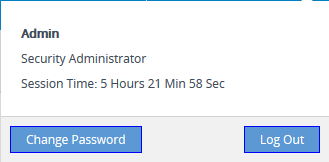Areas of Web Interface
The main areas of the device's Web interface are shown in the figure below and described in the subsequent table:

Description of the Web GUI Areas
|
Item# |
Description |
|||||||||||||||||||||||||||
|---|---|---|---|---|---|---|---|---|---|---|---|---|---|---|---|---|---|---|---|---|---|---|---|---|---|---|---|---|
|
1 |
Company logo. To customize the logo, see Corporate Logo. If you click the logo, the Topology View page opens (see Building and Viewing SIP Entities in Topology View). |
|||||||||||||||||||||||||||
|
2 |
Menu bar with the following menus:
|
|||||||||||||||||||||||||||
|
3 |
Tab bar with tabs pertaining to the selected menu on the Menu bar:
|
|||||||||||||||||||||||||||
|
4 |
Toolbar providing frequently required commands:
Note: If you have configured any IPv6 interfaces in the IP Interfaces table, the SBC Configuration Wizard is not supported and the Configuration Wizard command is not listed in the Actions menu. |
|||||||||||||||||||||||||||
|
5 |
Alarm bell icon displaying the number of currently active alarms sent by the device. The color of the number indicates the highest severity of all the active alarms. If you click the icon, the Active Alarms page opens (see Viewing Active Alarms). |
|||||||||||||||||||||||||||
|
6 |
Button displaying the username of the currently logged-in user. If you click the button, the following drop-down box appears:
|
|||||||||||||||||||||||||||
|
7 |
The |
|||||||||||||||||||||||||||
|
8 |
Product name of your device. Note:
|
|||||||||||||||||||||||||||
|
9 |
Navigation pane displaying the Navigation tree containing the commands (items) for opening the configuration pages (see Accessing Configuration Pages from Navigation Tree). |
|||||||||||||||||||||||||||
|
10 |
Search box for searching parameters and values (see Searching for Configuration Parameters). |
|||||||||||||||||||||||||||
|
11 |
Work pane where configuration pages are displayed and configuration is done. |
